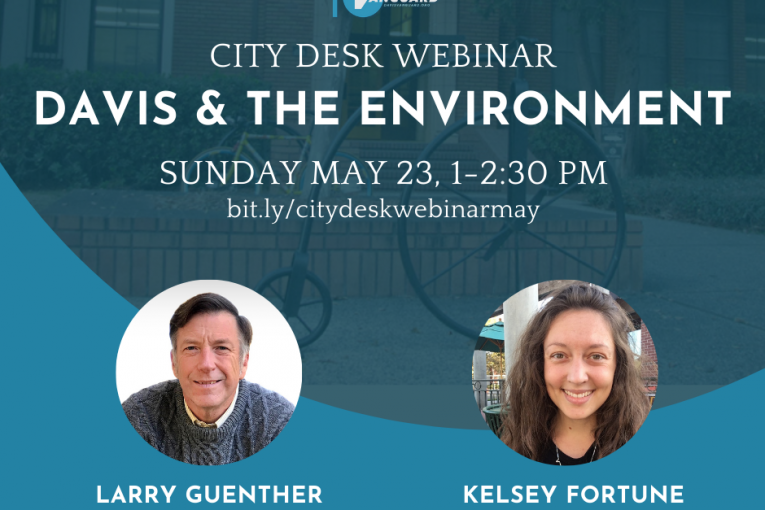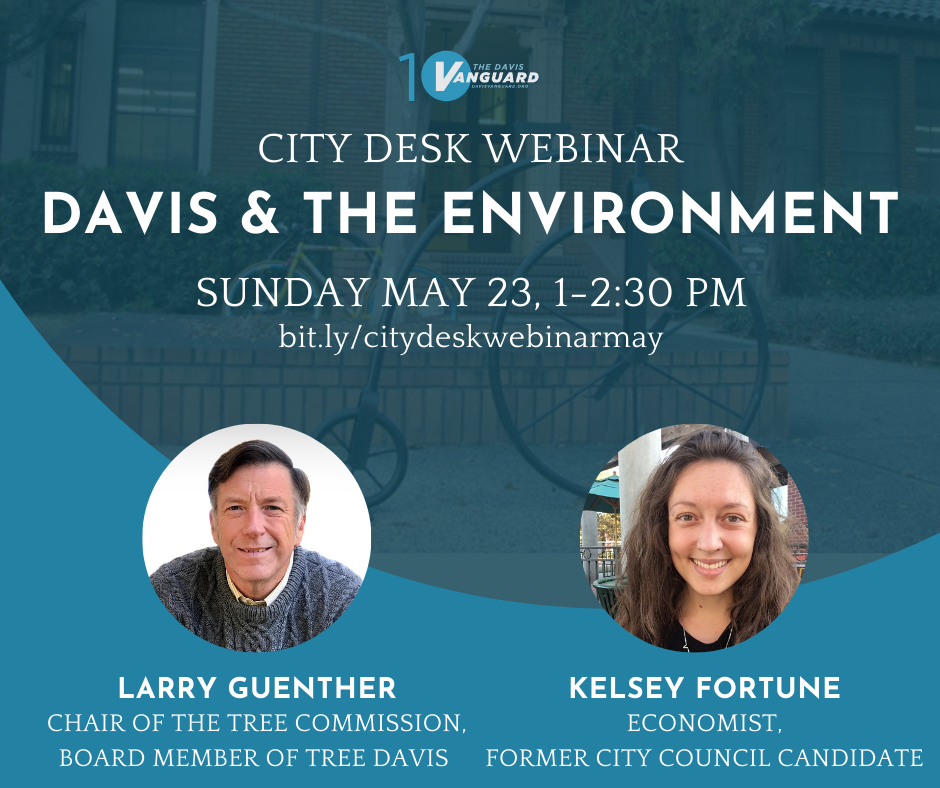

On May 23 at 1 pm, join the Vanguard City Desk and local environmental leaders to discuss pressing issues in Davis, including climate change, socioeconomic disparities in tree cover, and sustainability.
Guest:
Larry Guenther: the Chair of the Davis Tree Commission and a board member of Tree Davis as well as the president of the Old East Davis Neighborhood Association
* Please note, there will be several additional panelists announced as they confirm
Sign up here: https://us02web.zoom.us/webinar/register/WN_GmAuZEXYRKCmFHq-VcSAQw





Oh my…
It’s a real phenomenon. Tree Davis is trying to address it locally with tree plantings and followup care. Larry is definitely a good one to speak on that topic.
I appreciate the work of this commission, but I’m not sure where “socieconomic disparities” exist within Davis to such a degree that it impacts tree cover.
Nor do I know why those with fewer assets can’t plant and take care of a damn tree in front of their residences, without depending upon someone else to do it. Something that is indeed noticeable in some valley communities outside of Davis. As if the crime in those communities isn’t bad enough in the first place, without also making it hell on earth regarding lack of shade.
Really? Have you ever compared the wealth of even those in “less-advantaged” communities, compared to wealth in some second or third-world countries? Some of those folks do a lot more than take care of a single tree.
Since you admit you don’t “know” and are “not sure” this webinar would seem like a good opportunity to learn from these experts. That way you could know whether there are disparities in Davis impacting tree cover rather than speculating. Would it not?
Given “who” is conducting this seminar, it might be worth a listen.
If it weren’t for that, I’d be fully expecting to hear about racist trees (given the title), or how white people have “denied trees” to others.
But honestly, there are wide swaths in other towns which are more tree-less than anywhere in Davis. Parts of South Sacramento come to mind.
This is going to be an increasing problem as climate change worsens, trees can greatly mitigate heat, reduce air conditioning bills, etc.
True. And they work especially well for that, in this already-hot and dry climate.
I remember visiting downtown Sacramento as a young child, and being impressed with its canopy. Turns out that previous generations already understood their value. 🙂
Of course, they also create greenhouse gasses as a result of maintenance/trimming (e.g., the “claw” – or any other method used to remove green waste/branches, decomposing of green waste, repairs needed to sidewalks/sewer lines from roots, repairs to property damaged when branches or trees fall, etc.).
All of those related activities generate greenhouse gasses.
And every once-in-awhile, they fall on someone. Fortunately – extremely rare.
In Davis, a mature tree requires 150 to 300 gallons of irrigation during the summer. That translates to 0.03 to 0.07 lbs of GHG emissions. Trees sequester about 55 lbs per year, and can provide shading/cooling that reduces emissions another 12 lbs / year. So on net, trees are a substantial source of GHG mitigation even considering other emissions.
Not sure where those numbers are coming from, but I assume that GHG emissions are created by pumping city water. Perhaps something that most folks don’t think about.
I suspect that quite a few people do not realize that many non-native trees need irrigation. As I recall, some trees struggled as a result – during the last drought/water restrictions.
Curious as to how trees can continue to sequester 55 lbs each year, and where it ultimately “goes” (e.g., during its lifetime, or after).
No need to respond, of course. As they say, Google is my friend if so inclined.
In any case, their shade and beauty alone provide much of the “justification”. That shade can significantly cool buildings and vehicles, as well.
Sorry that I can’t make this webinar. Both Larry and Kelsey will have inciteful commentary on the current situation. It will go well beyond talking about trees! Larry is involved in much more than just the Tree Commission, and Kelsey has been working on electric vehicle economics and policy.